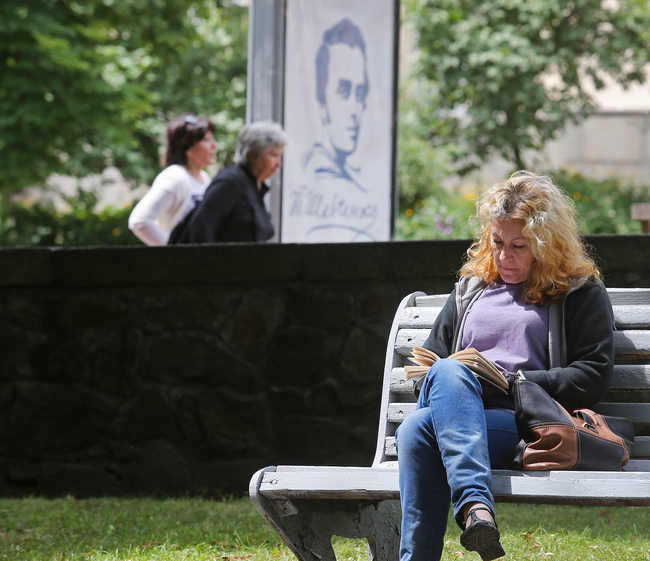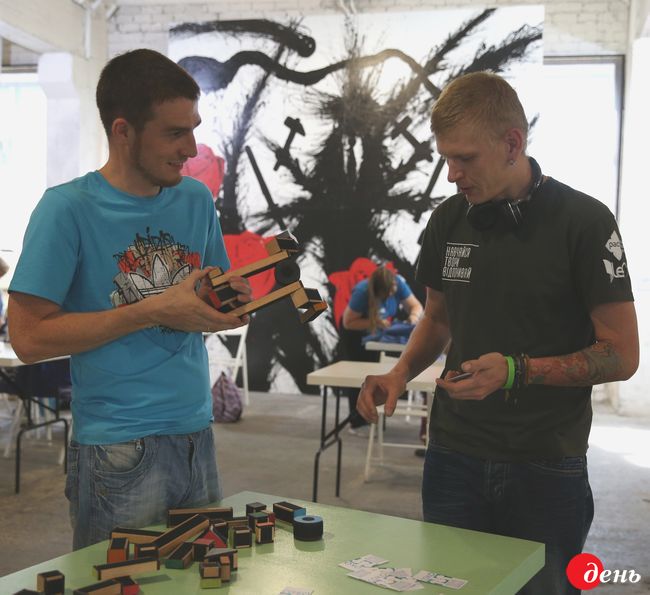Feeling Kyiv’s cultural code
Ukraine’s capital hosts the first art hackathon, uniting municipal initiatives around new thinking
“You need a city to become citizens.” This motto opened the art hackathon in Kyiv under the title City’s Cultural Code. The term hackathon originates from software industry and means an event where IT experts work to solve certain problems and develop new projects. In its turn, art hackathon took over the socio-cultural function, allowing the analysis of policies and potential of all city players (in business, art, and governance) to result in a model of a creative city. In other words, the city becomes something more than just an implementation of a scale model of streets and buildings: an intelligent and comfortable space both for its dwellers and tourists. This goal caused experts and novices in architecture, engineering, art, media, and social initiatives to gather past weekend at the Izolatsia community center, where the City’s Cultural Code was held.
“A creative, intelligent city is a tangle of intellect-intensive industries: creative industry, green energy, social innovations, and business analysis. Such a city attracts contemporary talents like a magnet. And such talents considerably affect the environment where they work and live,” said in her opening speech Iryna Solovei, president of the NGO Garage Gang and co-founder of Velyka Ideia, a social innovation platform.
The entire agenda of the art hackathon was based on four landmark challenges: Art and Technology, History and Innovation, Culture and Data, and Game and the City. Vita Bazan, coordinator of the program City Code, explains the choice of these particular guidelines: “We chose these challenges because they overlap in points which could become centers for interdisciplinary and intersectoral cooperation in the city.” Therefore on the first “talk” day, the participants tried to identify and formulate “the city’s cultural code,” while on the second, “practical” day, they were busy with development and pitching (presenting projects with a view to finding investors) cultural strategies and projects.
All the four talk blocks have something in common in one or another way. In the first one, Art and Technology, the presenters (media artist Heorhii Potopalsky and architect Fedir Boitsov) focused mostly on the applied aspects of the question. For instance, Boitsov, a young creator of pixel reality, presented his own project of preserving Odesa’s cultural heritage, albeit only in a virtual form (3-D scanning). Today the problem of preservation of cities is not confined to their defensive capability alone (although the situation in eastern Ukraine has sadly affected this trend). Yet speaking of peaceful cities, one must say that often their decay begins from within. One of the problems is advertisement pollution and thoughtless destruction of the cityscape with ugly new development. Architect Boitsov agrees that in the future advertisement can perhaps only exist in virtual space, the reality must remain unblemished. By the way, in one of his essays well-known Ukrainian author Taras Prokhasko draws parallels between physical pollution and the contamination of minds, the mental chaos.
But what can overcome this chaos in minds? For one, the comprehension of history, with museums as sites for it. “The museum is exactly the territory which could provoke both interesting ideas and certain historical experiences, which we could implement in today’s life. Museums want to become more available and visible to all of us, but on the other hand, the museum also expects some feedback from the community. Only such a dialog of equals can produce interesting things,” believes Yulia Vahanova, deputy director of the National Art Museum of Ukraine.

THE PARTICIPANTS OF ART HACKATHON SHARED IDEAS ABOUT TURNING THE CITY INTO A MAGNET FOR MODERN TALENTS FROM ALL SPHERES, INCLUDING ART, SCIENCE, TECHNOLOGY, CULTURE, HISTORY, ARCHITECTURE, AND DESIGN
One of the presenters on the platform History and Innovation, art manager Sofia Riabchuk of the Ukrainian Center for the Development of Museums also emphasizes the notion of “participatory culture” in the context of museum attendance, when the visitor covers the distance from a consumer of information to a participant. Nina Simon, American researcher and museum expert, has characterized this institute in the spirit of participatory culture: “It is a place where visitors can create, share, and connect with each other around content” which is shaped by the museum self. Today, like never before, we need the museum as the territory for discussion and interpretation of society’s sore points, solving local and global problems, and outlining routes of development. Historical heritage must not lie dormant, while the city with ambitions cannot break free from its roots. That is why the question of “participatory culture” has never been as topical for Ukraine’s society as it is today, and not only on the level of museums, but also on that of global urban development processes in various spheres.
To avoid mistakes in calculations in urban development, we need data on it. This was emphasized in the talk by Mykola Skyba, director of the Cultural Strategies Agency and co-founder of the platform of strategic initiatives Culture 2025. “Do you know on which stage of project development is the price of a mistake the highest?” asked Skyba addressing the participants of the art hackathon. Someone answered that it was probably the phase of completion. Actually, it is just the contrary, the initial phase, when the project is just being started. According to the presenter, it is design thinking that helps avoid mistakes. The very name of the concept speaks volumes.
By the way, Iryna Solovei’s talk also touched on thinking: Solovei noted that the modern man has increasingly shorter “thinking time,” and that we need to reserve it for ourselves. “If we want to come up with a project for the city, we must think on the national scale; if we want a project for the country, we must think globally,” said the organizer of the art hackathon.

“PIXEL REALITY.” A VISITOR IS TRYING OUT FEDIR BOITSOV’S DESIGN FOR VIRTUAL PRESERVATION OF ODESA’S CULTURAL HERITAGE BY WAY OF 3D SCANNING
“We are through with ‘bad citizens,’ who did not develop but were only to some extend supported by the system which no longer meets the challenges of the time,” said Solovei in a comment to The Day. “Instead, we got conventional ‘bad mayors,’ who shift the burden to volunteers. Now we face a challenge: to make this into a new system. New players and stakeholders have appeared: now that is not only business and government, but also citizens. So, in order to develop systemically, the city needs to avoid a situation when only grassroots groups develop spontaneously, or when a competent manager ignores grassroots movements. For the nearest 5 to 10 years we should be talking about an optimal strategy at the intersection of the interests of the public, business, and administration. It is not so easy to find points of balance: you must be continuously engaged in dialog.
“Speaking of Kyiv’s cultural code, it is implemented in the concept of the ‘wise city.’ Starting from the idea of concentration of wisdom and projecting it on the current situation, we can speak of Kyiv becoming a ‘melting pot’ for the new cultural code of the entire nation.”
The results of team work and pitching of ideas allowed the art hackathon mentors to pick three winners with the best urban initiatives. The first place (together with a budget of 1,300 dollars for the implementation of the idea) was given to the project ViLnaKhAta, which suggests filling the so-called public spaces with content via such spatial structures as the park, the square, and the street. The second prize was given to the initiative #cityfacesmap (500 dollars), the third to #urbanavt (200 dollars). Yet what made the City’s Cultural Code really valuable was not so much the opportunity to win the money and finance a project, as to shape individuals with a new type of thinking and a new culture of participation in their own city’s life.
Section
Day After Day





